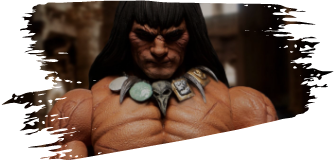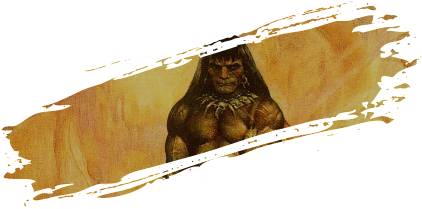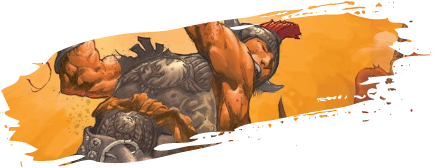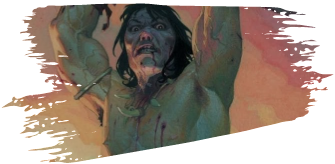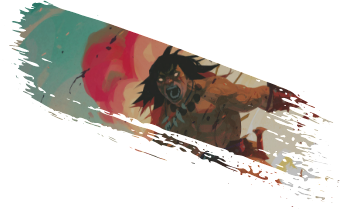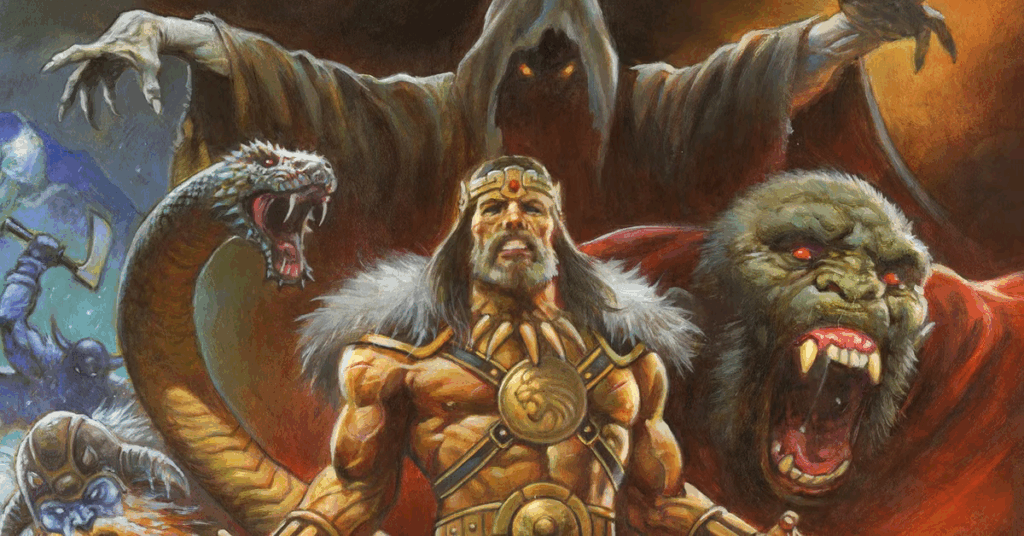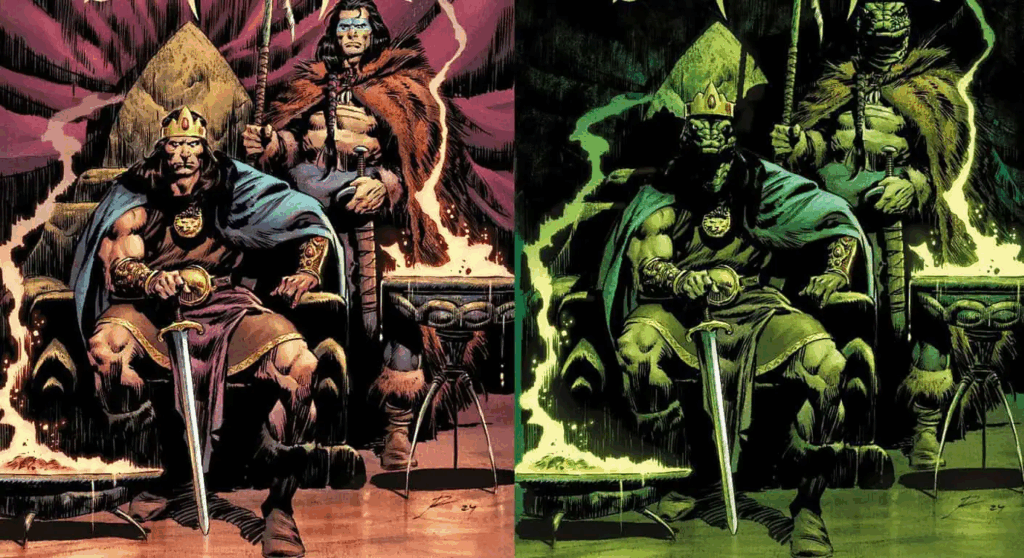
Think you know the companions who’ve stood beside Conan the Barbarian? Think again.
While the mighty Cimmerian dominates the spotlight of sword and sorcery, the shadows at his side conceal secrets far deadlier than most fans ever realized. Among these secrets lurks a character whose very existence defies simple categorization: a warrior known as Zula.
You may think you know Zula. You don’t.
This is the story of how a single supporting character split into multiple legends, each carving their own bloody path through the Hyborian Age, and how these divergent trails are about to converge in a new legendary tale.
The Original Zula from the Conan the Barbarian Marvel Comics
In the shadow-haunted corners of Marvel’s Hyborian Age lurked a sorcerer-warrior whose very existence challenged what Conan fans thought they knew about Howard’s world. His name was Zula – a creation not of Howard himself, but of the legendary Roy Thomas, whose pen gave birth to characters now inseparable from the Conan mythos.
This was not the Zula that casual fans might recognize. This Zula stood tall among men, born to the southern tribes, with powers that whispered of ancient mysteries. The comic panels that contained him could barely hold his presence.
For readers seeking to understand this enigmatic character, the essential starting point lies in Marvel’s Conan the Barbarian issues #84 through #90. This crucial arc, set during Conan’s adventures with the pirate queen Belit, contains Zula’s introduction and origin story. These issues establish the foundation of the character, revealing how he came to join Conan’s journey and the unique perspective he brought to the Hyborian Age.
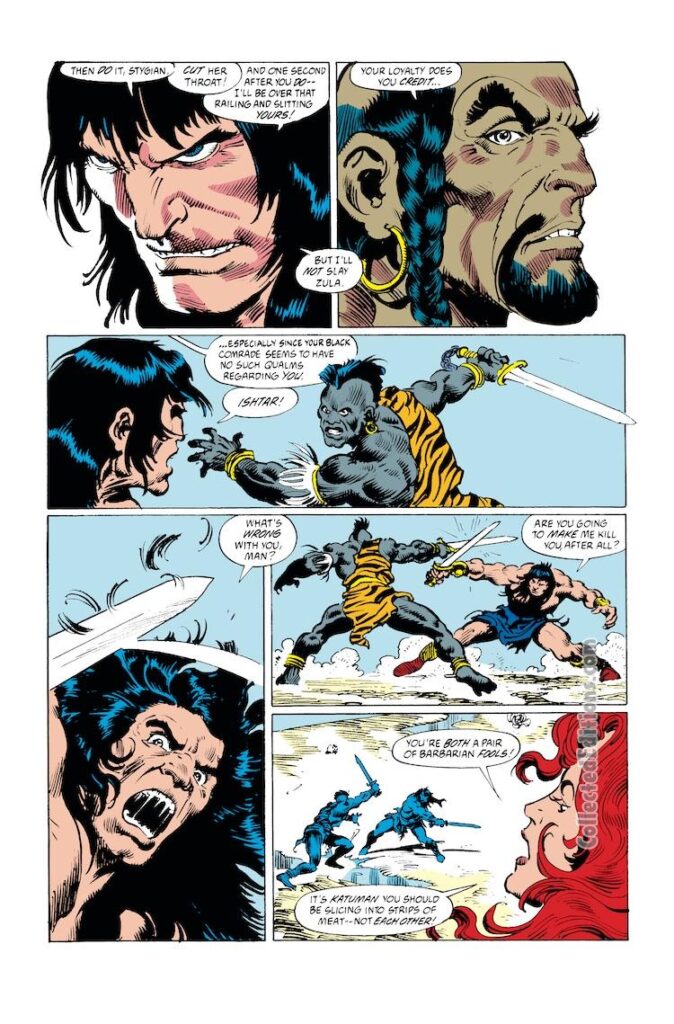
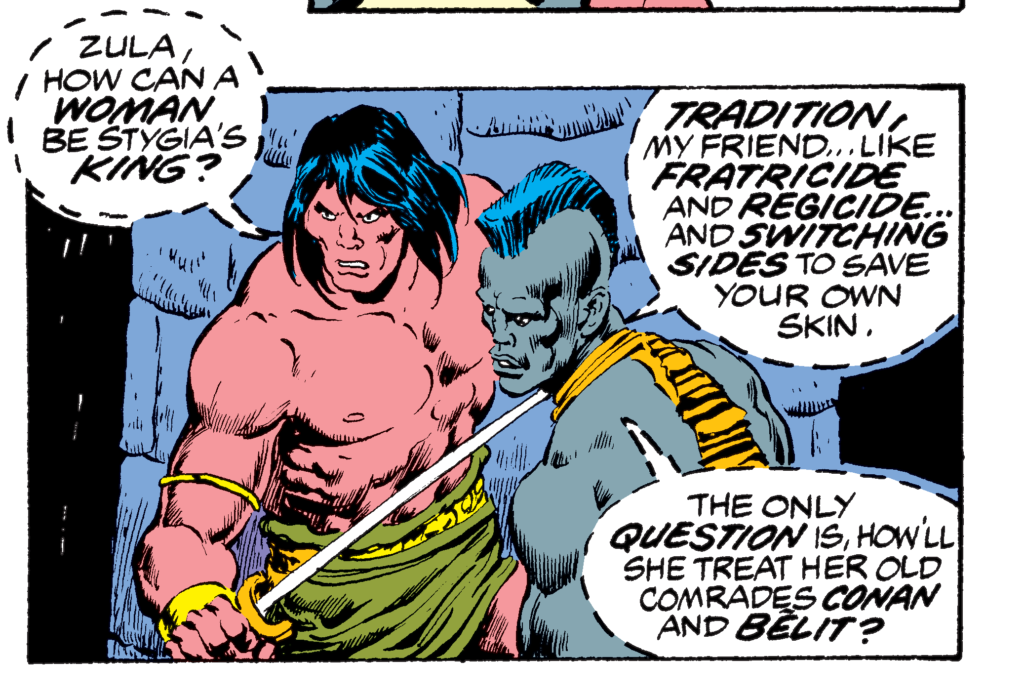
While always depicted with sorcerous abilities, the early Zula wielded subtle magics, mesmerism, and minor enchantments that complemented his physical prowess. But as the pages turned and years passed, his power grew. By the early ’90s, Zula had transformed into a true sorcerer whose mystical might enabled him to challenge vampires and rival conjurers like the dreaded Thugra Khotan.
What remained remarkably consistent was the hand that guided him. Unlike many comic characters who pass between writers like coins between merchants, Zula remained exclusively in the care of his creator. Roy Thomas scripted every Zula tale that Marvel published, ensuring a continuity of vision rare in the often-fragmented world of comics.
But then came 1984, and with it, a cinematic earthquake that would forever split the legacy of Zula in two.
Comparing Grace Jones’ Depiction of Zula in Conan the Destroyer (1984) to the Comic Book Zula
When “Conan the Destroyer” flickered to life on silver screens across the world, audiences encountered a Zula they had never imagined. Wild-eyed, fierce, and unmistakably female, Grace Jones had arrived, and with her, a controversy.
Thomas himself has spoken of his surprise at seeing his character’s name attached to someone who bore almost no resemblance to the original male version. The studio never credited him for Zula’s name – an oversight that stung, even as Jones created something entirely new with the character. Thomas’ concerns weren’t primarily about the gender swap, but rather the wholesale transformation of a character he had carefully crafted.
However, the casting was anything but an accident.
Producer Dino De Laurentiis and director Richard Fleischer weren’t looking for someone to faithfully adapt Thomas’ creation. They sought something else entirely: a warrior whose very presence would shatter expectations and sear itself into audience memory. They found exactly that in Jones. In the early ’80s, Grace Jones was already a force of nature as a singer and model known for her androgynous appearance and intense persona.
For the two filmmakers, Jones was about as perfect a fit as they could imagine.
What followed was transformation of a different kind. Though not a trained actor or fighter, Jones hurled herself into becoming Zula with characteristic intensity. She trained relentlessly in martial arts and horseback riding, bringing to the role a physical commitment that transcended mere performance.
Her Zula traded the calculated swordsmanship of her comic counterpart for something more primitive and arguably more terrifying: a wooden quarterstaff wielded with untamed ferocity. What she lacked in finesse, she more than compensated for with raw, animalistic aggression.
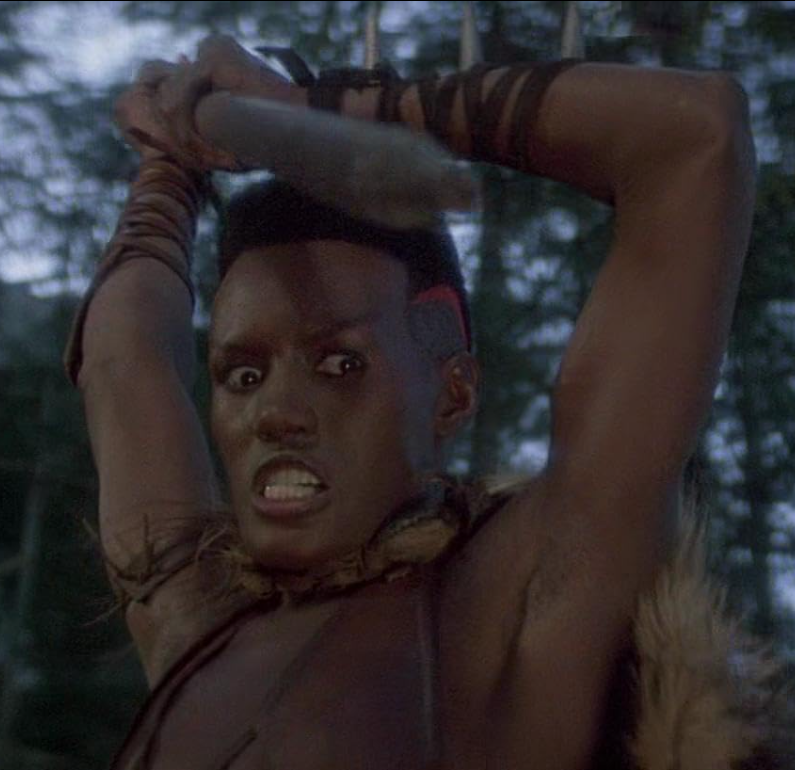
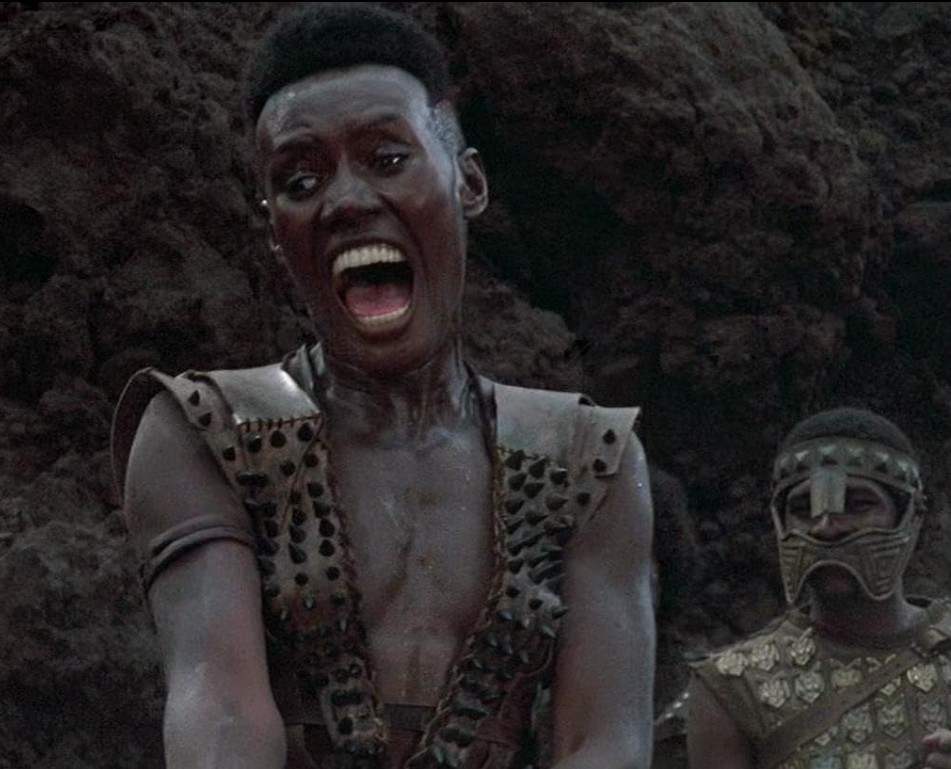
Behind the scenes, tales of her fierce dedication became legendary. She was reportedly rough with stuntmen, intense with crew members, and there are even stories of her biting one of her drivers in a moment of method-acting immersion.
Fleischer, recognizing the raw power before him, wisely stepped back in certain scenes. As historian Jeff Shanks notes, Fleischer thought of her as “so naturally primal that it was often better to let her do her own thing”. Her battle cries – primal, spine-tingling yells that would become signature elements of the character – were largely improvised, eruptions of authentic intensity that no script could have captured.
Curiously, the initial fan response to this dramatic reinvention was muted – not because fans approved, but because in a pre-internet era, avenues for fan discourse were limited to letters columns and sparse fanzines. What criticism existed targeted the film’s overall campier tone rather than Jones specifically. In fact, as the years passed, her performance emerged as one of the most memorable elements of “Conan the Destroyer,” a saving grace in a film often considered inferior to its predecessor.
The result of Jones’ Zula was a character utterly distinct from Thomas’ creation yet impossible to forget. These two Zulas – one born of ink and imagination, the other of celluloid and raw charisma – could not be more different on the surface. Yet both stood apart in worlds dominated by others, both wielded power in unexpected ways, and both proved that even in the shadow of a character as dominant as Conan, the right supporting character could claim territory entirely their own.
Most tellingly, both versions shared one crucial trait: an unwavering loyalty to Conan. In both incarnations, Zula owed freedom to the Cimmerian and repaid that debt with fierce allegiance. This deep bond of obligation and friendship remained the character’s emotional core regardless of gender, fighting style, or magical abilities.
With this knowledge, it becomes clear that the question was never which Zula was “correct” but rather what these two interpretations, taken together, revealed about the endless possibilities lurking in the fertile soil of Howard’s world.
How Jim Zub is Enhancing Zula in the New Conan the Barbarian Comics
When Jim Zub set out to bring Zula back to the pages of their Conan comics, he faced what seemed an impossible contradiction. How could one character embody both the male sorcerer from Marvel’s comics and the fierce female warrior immortalized by Grace Jones? These visions stood at opposite ends of Howard’s universe. He soon realized that the challenge ran even deeper than most recognized.
“I think there’s actually three [Zulas],” Zub explains, revealing that beyond the comic book sorcerer and Grace Jones’ warrior, a third incarnation from the 1990s Conan animated series further complicated the picture. Each version had developed its own following, its own mythology, and its own claim to the name Zula.
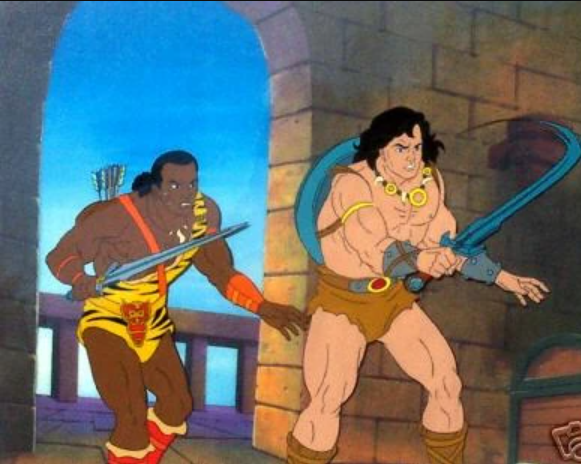
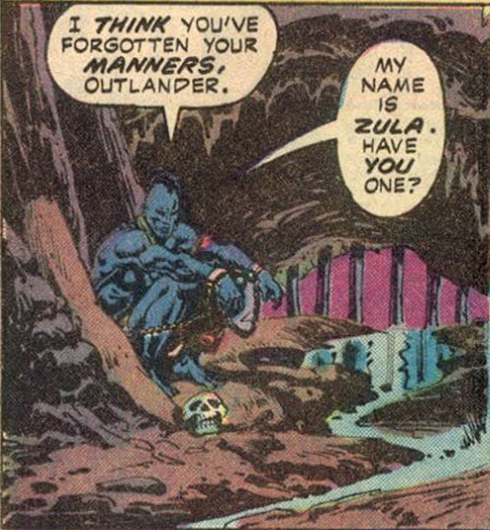

Lesser creators might have chosen one version and discarded the others, or relegated conflicting versions to alternate timelines. Zub instead saw an opportunity to enrich Howard’s world by diving into its very foundations.
“I wanted to bring aspects of all three Zulas together into our new Heroic Signatures comic series,” he reveals, “so fans could see a character they recognize, but also not know for sure where we’re going.”
His solution emerged from Howard’s own mythology: shape-shifting, a power as ancient as the Hyborian Age itself. The elegance of this approach lies in that it makes it so that the character’s very identity in any given iteration becomes a storytelling tool rather than an obstacle.
By making Zula a shape-changer, Zub also enabled the character to be connected to one of the most primal conflicts in Howard’s prehistory: the ancient war between the shape-changers of the Black Kingdom and the Serpent-Men of pre-Stygia.
This evolution creates storytelling possibilities that extend far beyond visual transformations. “Having Zula represent one side of that war gives it more ‘bite’ and tees up several plot points we’ll be exploring in future story arcs,” including what Zub notes will be a “Scourge of the Serpent” event mini-series coming this Fall.
But the most profound impact may be on the emotional dynamics within Howard’s world. Shape-shifting introduces an element that resonates with the Hyborian Age’s dangerous uncertainty: the question of trust.
“There’s an inherent tension whenever you have illusion or shapeshifting as part of a story,” Zub observes. “That overriding feeling of ‘Who can you trust?’ intensifies everything, and it’s a fun way to heighten the emotional stakes in a world like the Hyborian Age where survival is always uncertain.”
These stakes extend to Zula’s relationship with Conan himself. The mighty Cimmerian has never fully trusted magic, so how might he react upon discovering his loyal companion’s true nature? Furthermore, is the essence of identity found in physical form, in spirit, or in something more elusive? Is the male sorcerer more “authentic” than the female warrior, or is Zula’s true self something that exists beyond any single manifestation? These are all questions that Conan, and the audience, will have to explore together at the same time.
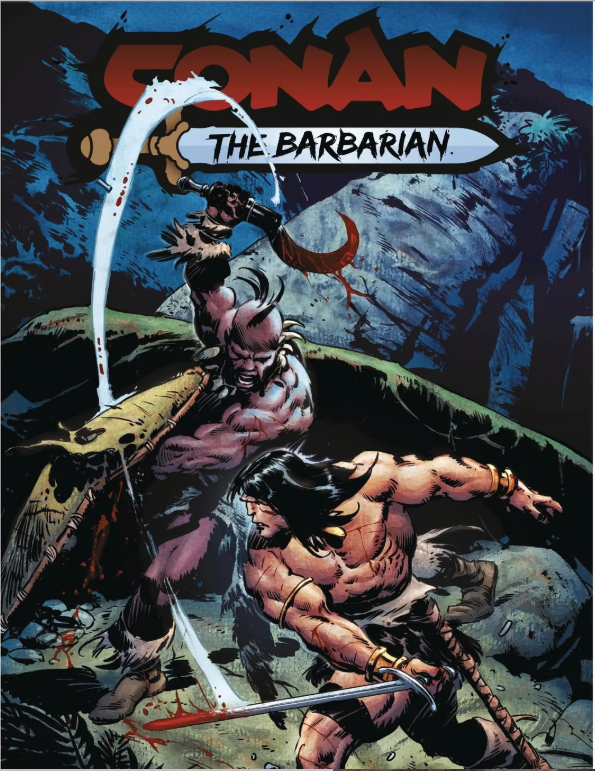
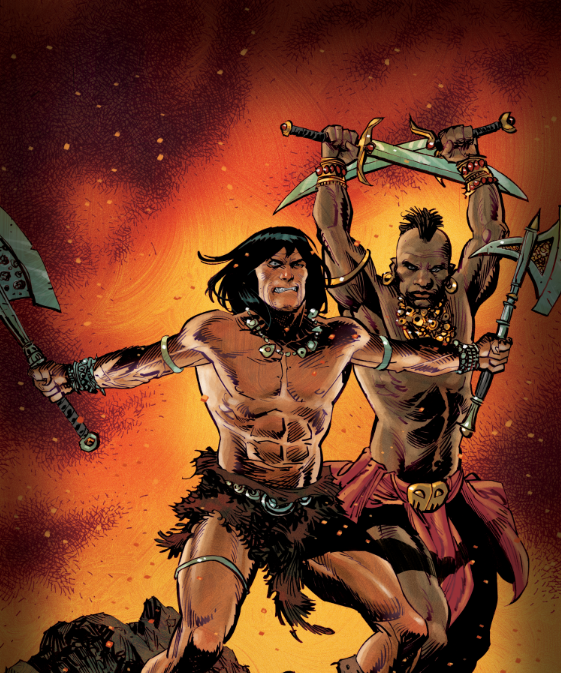
Under Zub’s careful hand, the narrative horizons seem as limitless as the forms Zula might take. Will we see transformations mid-battle that combine sorcerous powers with primal ferocity? Will Zula’s fluid nature allow access to secrets and places even Conan cannot reach? These questions await answers in the pages to come.
What’s certain is that the shape-shifting Zula stands ready not just as a supporting character, but as a vital connection to the most ancient and mysterious corners of Robert E. Howard’s enduring creation.
In this new iteration, longtime fans will recognize elements from every Zula they’ve followed across decades and newcomers will encounter a truly crafty, complex character that keeps them on their toes.
The ancient conflict between shape-changers and Serpent-Men promises to deliver action, intrigue, and revelations that even longtime Conan fans never saw coming. The only question is: will you be there when the blood starts flowing?
Click the button below to find your local comic shop and ask them to add Conan to your pull list today!

Lo Terry
In his effort to help Heroic Signatures tell legendary stories, Lo Terry does a lot. Sometimes, that means spearheading an innovative, AI-driven tavern adventure. In others it means writing words in the voice of a mischievous merchant for people to chuckle at. It's a fun time.


